- News
- Reviews
- Bikes
- Components
- Bar tape & grips
- Bottom brackets
- Brake & gear cables
- Brake & STI levers
- Brake pads & spares
- Brakes
- Cassettes & freewheels
- Chains
- Chainsets & chainrings
- Derailleurs - front
- Derailleurs - rear
- Forks
- Gear levers & shifters
- Groupsets
- Handlebars & extensions
- Headsets
- Hubs
- Inner tubes
- Pedals
- Quick releases & skewers
- Saddles
- Seatposts
- Stems
- Wheels
- Tyres
- Tubeless valves
- Accessories
- Accessories - misc
- Computer mounts
- Bags
- Bar ends
- Bike bags & cases
- Bottle cages
- Bottles
- Cameras
- Car racks
- Child seats
- Computers
- Glasses
- GPS units
- Helmets
- Lights - front
- Lights - rear
- Lights - sets
- Locks
- Mirrors
- Mudguards
- Racks
- Pumps & CO2 inflators
- Puncture kits
- Reflectives
- Smart watches
- Stands and racks
- Trailers
- Clothing
- Health, fitness and nutrition
- Tools and workshop
- Miscellaneous
- Buyers Guides
- Features
- Forum
- Recommends
- Podcast
review
£36.00
VERDICT:
If you run tubeless with sealant, on or off-road, you want this kit. It's design and engineering par excellence
Weight:
95g
Contact:
At road.cc every product is thoroughly tested for as long as it takes to get a proper insight into how well it works. Our reviewers are experienced cyclists that we trust to be objective. While we strive to ensure that opinions expressed are backed up by facts, reviews are by their nature an informed opinion, not a definitive verdict. We don't intentionally try to break anything (except locks) but we do try to look for weak points in any design. The overall score is not just an average of the other scores: it reflects both a product's function and value – with value determined by how a product compares with items of similar spec, quality, and price.
What the road.cc scores meanGood scores are more common than bad, because fortunately good products are more common than bad.
- Exceptional
- Excellent
- Very Good
- Good
- Quite good
- Average
- Not so good
- Poor
- Bad
- Appalling
The milKit Tubeless Valve and Refill kit makes tubeless tyre filling, checking and changing a mess-free doddle. If you run tubeless, on or off-road, you need this.
It's a pretty safe bet that unless you've been hiding under a rock for the last year you'll have heard of 'road tubeless' tyres. Tubeless means there's no tube inside your tyre to hold the air, so you're reliant on a rim, tyre and valve that work together as a system to keep the air in.
> Find your nearest dealer here
The main benefit is that, because your tyre is much, much tougher than a thin inner tube, 'snakebite' punctures – where the inner tube is smashed between the metal rim and the edge of say a pothole or rock – are a thing of the past. And because you aren't fussed about snakebites you can run lower pressures, meaning less rolling resistance, more grip, and a lot more comfort.
Tubeless tyres are also built tougher to resist punctures from thorns, flints or glass. As a final level of protection, most people use a dollop of sealant to flow into any puncture hole and seal it from the inside out.
The most popular and effective sealants are latex-based, but here's the problem: liquid latex doesn't like air, and it really doesn't like carbon dioxide from inflators. So after two to six months, depending on the brand used, humidity and temperature, the latex sloshing around inside your tyre will most likely have dried into something resembling congealed alien snot. (The bits people spend hours picking off their tyres and rims aren't called 'boogers' for nothing.) Technology is advancing, and there are a few brands on the market that claim to be latex-free and not to dry out. They have compromises of their own, so for now it's pretty much latex as the go-to sealant.
But how do you know what the sealant is like inside your tyre? How do you know if there's enough still in liquid form to effectively seal a decent puncture, or maintain a good rim seal? If only there was a way of checking and topping up the sealant without taking the tyre off or needing a compressor to re-seat it...
Credit Swiss
The milKit system was devised in Switzerland to do just this, after a mountain bike ride in Moab, USA was cut short due to a flat tyre and dried-out sealant. The founder, Pius Kobler, teamed up with entrepreneur Sven Rizzotti and went to crowdfunding site Indegogo last year. They hit the jackpot and blew through their $25k funding target in a month, with hundreds of cyclists keen to solve a universal problem.
Thus the milKit tubeless system was born. (We first reported on this as they were seeking funding back in April: see here.)
The kit contains a large clear plastic syringe, holding 60ml or 2oz of fluid. There are two thin plastic tubes, one with an on-off tap that screws into the syringe, the other with an angled end, plus two special rim valves and a valve core remover tool. The valves have sufficient threaded length to fit a rim that's 22mm or less in depth, from where the rubber hits the rim bed to the spoke surface (milKit plans to release a 'road specific' valve that will suit deeper rims).
All this including the valves comes ingeniously packaged within the plunger of the syringe itself, so after first use you can sling the lot into a toolbox or kitbag without losing bits. Extra valve pairs cost £19, which is a slight premium over the £10-£15 you pay for other 'non-self-sealing' tubeless valves.
The valves go onto your tubeless-ready rims easily enough, tightened 'only slightly'. On the inside end of the valve body there's a one-way rubber 'flower' with four 'petals', that closes itself and effectively seals the bottom end of the valve body, even with the Presta valve core removed. This is the cunning genius of the milKit – how to measure and top-up sealant that is designed to clog small holes, without passing it through the very, very small hole that is a normal Presta valve, without letting all the air out when you remove the valve core. When the Presta valve core is removed, the air stays inside the tyre thanks to the rubber petals on the end of the valve body inside the tyre.
When you want to measure or refill, you slip the thin plastic tubing attached to the syringe inside the now-open valve body, it then pushes through the rubber petals, down until it hits the bottom of the tyre and, hey Presta! (sorry), you have access to the inside of the tyre and all of the sealant. This is why the tube end is cut at an angle – so it can suck every drop of sealant up when pressed against the bottom of the tyre.
The Presta valve core has a plastic extension on the bottom, so when it's installed and depressed it pushes the rubber petals apart to let air out. The rubber petals also keep sealant from flowing into the valve core and blocking the Presta bit. (You can see all this on the video.)
Spill checker
In practice it works amazingly well. I've checked and topped up sealant levels, and also drained almost all the sealant out for re-use without spilling a single drop or losing much air pressure.
It is critical to follow the warnings and check tyre pressure is not above 22psi before using the syringe, and also to have the on-off tap closed when first inserting the tube into the valve. I learnt the hard, messy way (and to the immense comedic satisfaction of my Twitter followers), when late one evening after two too many workshop beverages I inserted the tube into a sealant-loaded 28mm tyre still at 60psi, with the tap open. The resulting explosive decompression of the tyre forcing 2oz of sealant back through the syringe, propelled the plunger clear across my garage, and coated everything within a 3m radius, self included, in a fine spray of sealant. RTFM, folks. And easy on the fettling refreshments.
Assuming you can follow 36 words of clear instruction, the experience of inserting the tube, opening the tap, seeing the sealant flow up into the syringe under its own power, inspection, and re-insertion (possibly with a subsequent injection of some extra) is rather magical.
The design allows you to turn off the tap, remove the syringe to suck some extra sealant up from a cup, then re-attach to the tube for insertion.
One of the most popular sealants is the latex-based Caffélatex. The manufacturer, Effetto Mariposa, recommends checking Caffélatex every two months, to make sure it's liquid and therefore retains its 'puncture preventive' action. Effetto Mariposa also sells a syringe and tube, but it's for injecting only, and doesn't allow for removal/checking of the quantity/quality of sealant remaining. Again, this is the beauty of the milKit system – check/top up in one go, in less than a minute, without disturbing the tyre/rim seal or even fully deflating. Effetto Mariposa's owner says the milKit is 'a very helpful addition to the tubeless technology'.
At £36 for a plastic syringe and two valves, some will no doubt suggest there's a bit of extracting the Michael going on. The Effetto Mariposa latex injector syringe kit is 'only' £10 – but that's to miss the point. What you are getting with milKit is a system – one that supports not only insertion, but easy and fast checking, replenishment and removal. Given that a decent tubeless tyre alone is £50, the £36 one-off cost for the ability to maintain your tyre system easily and cleanly is, to my mind at least, a no-brainer.
Verdict
If you run tubeless with sealant, on or off-road, you want this kit. It's design and engineering par excellence
road.cc test report
Make and model: Milkit Tubeless Valve Refill Kit
Size tested: n/a
Tell us what the product is for, and who it's aimed at. What do the manufacturers say about it? How does that compare to your own feelings about it?
The milKit is for anyone running tubeless tyres, on- or off-road, who uses sealant.
Milkit says:
CLEAN, SAFE AND SIMPLE
Fast: Measure and refill sealant without deflating the tire
Clean: A rubber flap prevents sealant from filling and blocking the valves
Reliable: No more guessing games. Riders will always know exactly how much sealant is needed
Simple: Clean hands and easy to use
Tell us some more about the technical aspects of the product?
It's a collection of tubes and a syringe. It's not overly technical.
Rate the product for quality of construction:
9/10
It's Swiss engineering, so of course it's very, very nicely done.
Rate the product for performance:
10/10
Used correctly, it does its job perfectly.
Rate the product for durability:
8/10
It's robustly made for what it does, and I can't foresee any longevity issues.
Rate the product for value:
9/10
Given the milKit will save you wasted sealant and time checking/resetting tyres, it's great value.
Tell us how the product performed overall when used for its designed purpose
Can't fault it. Perfect.
Tell us what you particularly liked about the product
How everything works together perfectly.
Tell us what you particularly disliked about the product
Nothing.
Did you enjoy using the product? Yes
Would you consider buying the product? Yes
Would you recommend the product to a friend? Yes
Use this box to explain your score
It's very hard to criticise; I could have marked it down for want of a more robust syringe, or idiot-proof blowback prevention – and not everyone will want to pay £36 – but to my mind it's an exceptional product.
About the tester
Age: 42
I usually ride: Charge Juicer My best bike is:
I've been riding for: Over 20 years I ride: A few times a week I would class myself as: Expert
I regularly do the following types of riding: club rides, general fitness riding, fixed/singlespeed, mountain biking, and Dutch bike pootling
Living in the Highlands, Mike is constantly finding innovative and usually cold/wet ways to accelerate the degradation of cycling kit. At his happiest in a warm workshop holding an anodised tool of high repute, Mike's been taking bikes apart and (mostly) putting them back together for forty years. With a day job in global IT (he's not completely sure what that means either) and having run a boutique cycle service business on the side for a decade, bikes are his escape into the practical and life-changing for his customers.
Latest Comments
- eburtthebike 57 min 13 sec ago
A sad case, and one with no winners. The driver can thank her lucky stars that the cyclist wasn't more seriously injured and that the court was...
- AidanR 1 hour 53 min ago
Bloody hell... How are you doing now?
- ktache 2 hours 2 min ago
And I liked endura too. Got a nice long sleeve mostly merino long sleeve a little while back, in orange.
- matthewn5 2 hours 30 min ago
No, the Ebay lights have been around for several years, this Lezyne light just appeared.
- chrisonabike 2 hours 46 min ago
They shouldn't worry - the second part of the "tariff" refrain is "they can make it in US and they'll do very well".
- Mr Blackbird 3 hours 18 min ago
"At the going down of the sun, it will get in our eyes and cause us to crash into things."
- Rendel Harris 3 hours 26 min ago
Been living in the area thirty years now and Brixton Cycles (and local riders wearing their famed Rastafarian colours jersey) has been an iconic...
- chrisonabike 5 hours 31 min ago
Does the "super-loud yellow" also help alert (non-deaf / non-earbud-wearing) pedestrians? Or will it just mean dogs bark at me?
- chrisonabike 8 hours 22 min ago
Indeed - but again these are perhaps questions we should keep asking. Even if the immediate answer is "well we are where we are" or "how on earth...







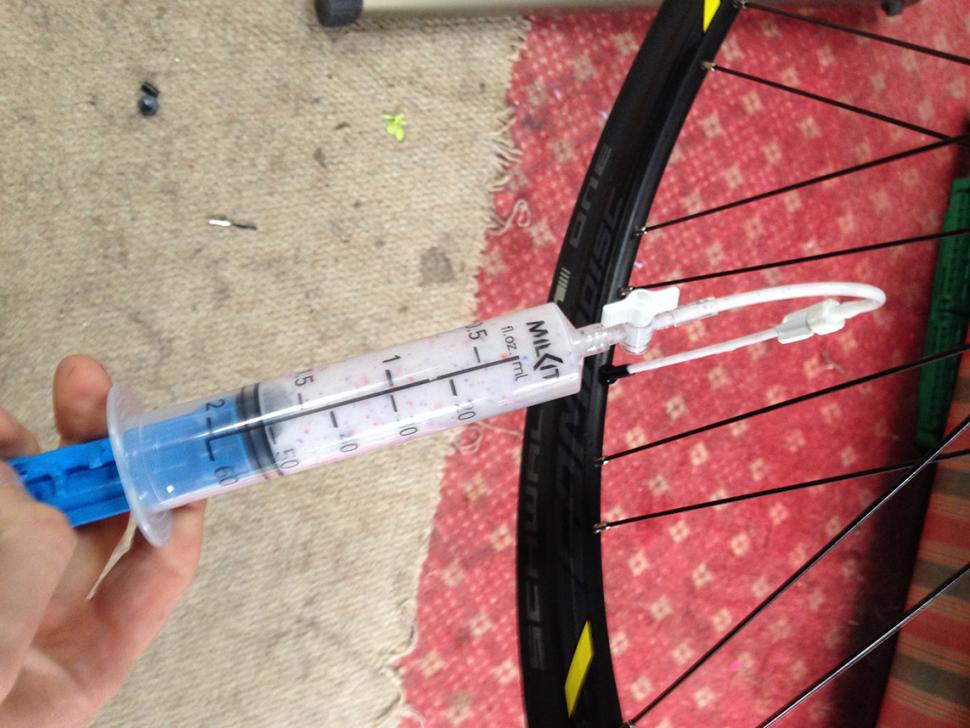
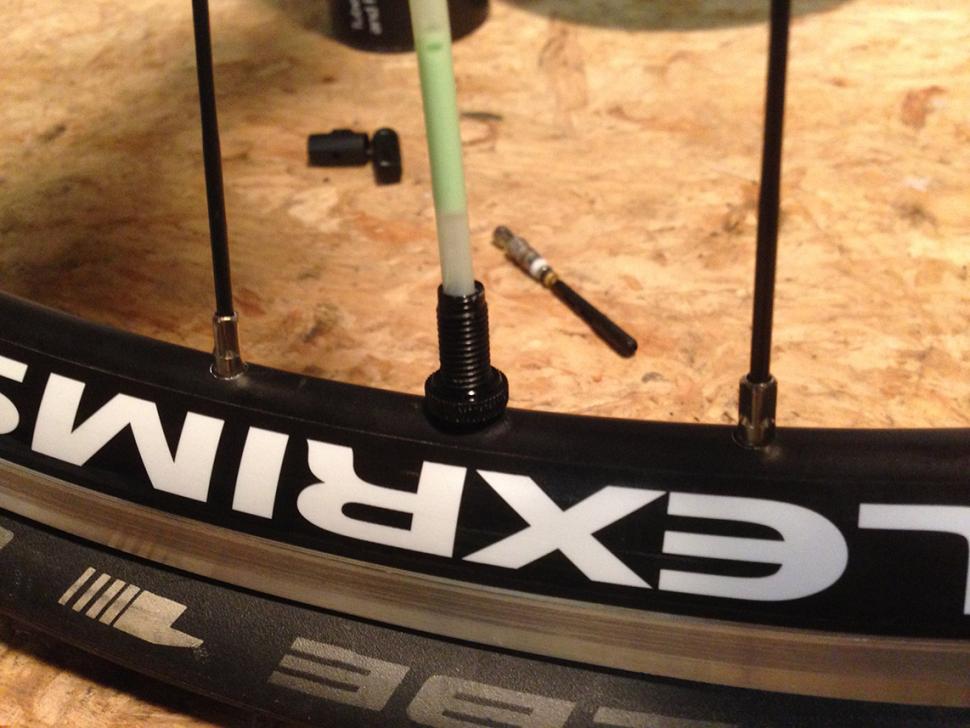
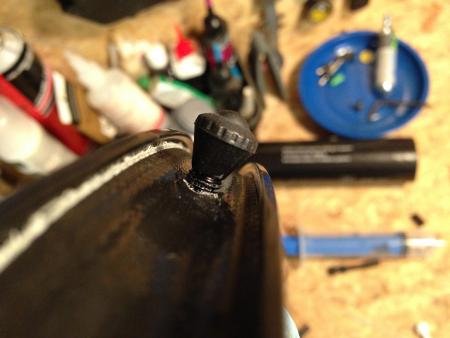

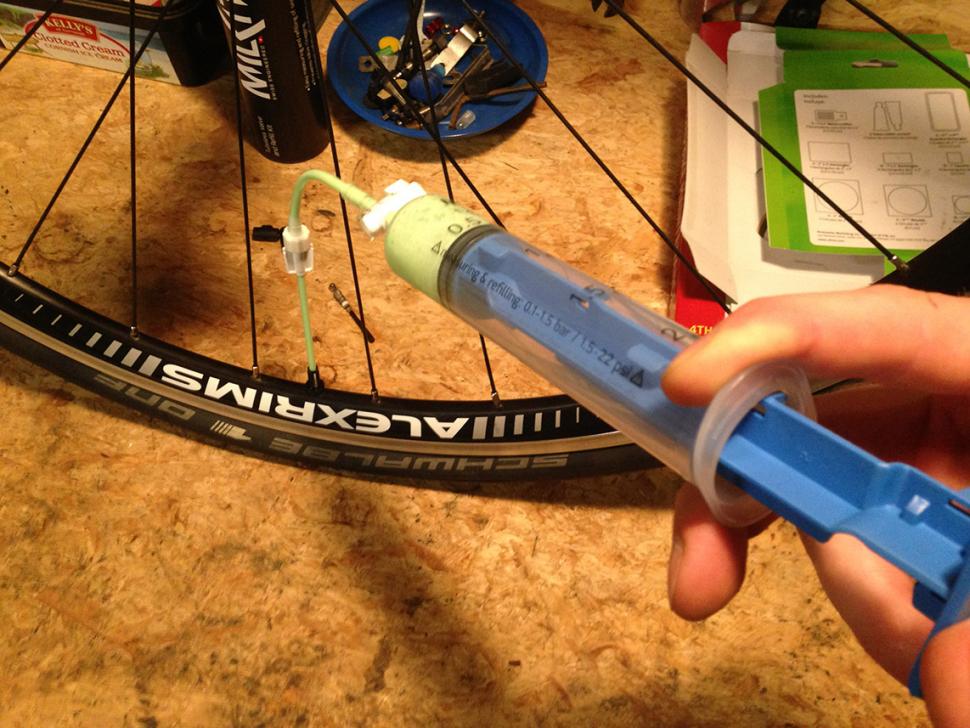

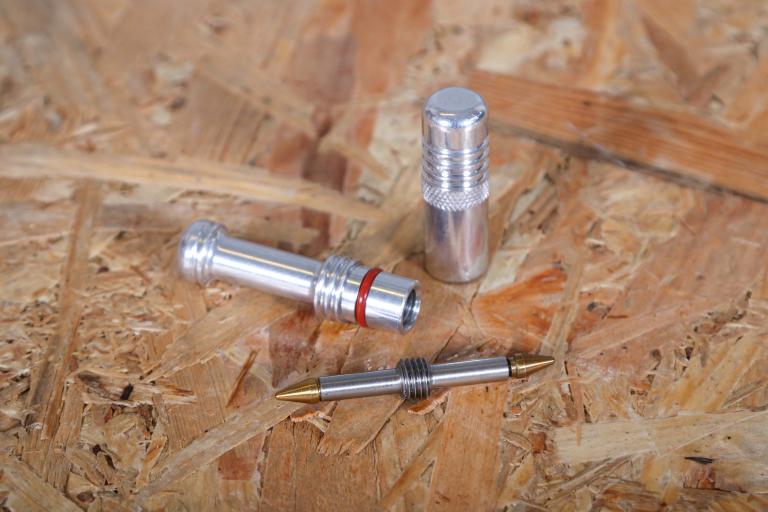
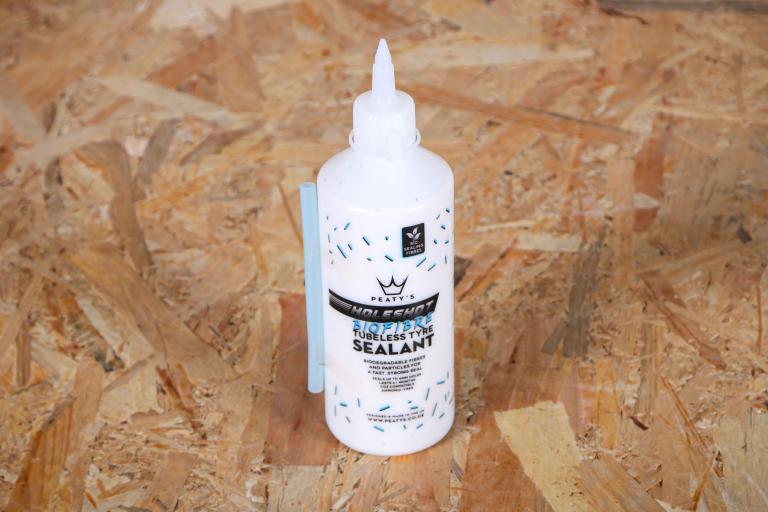
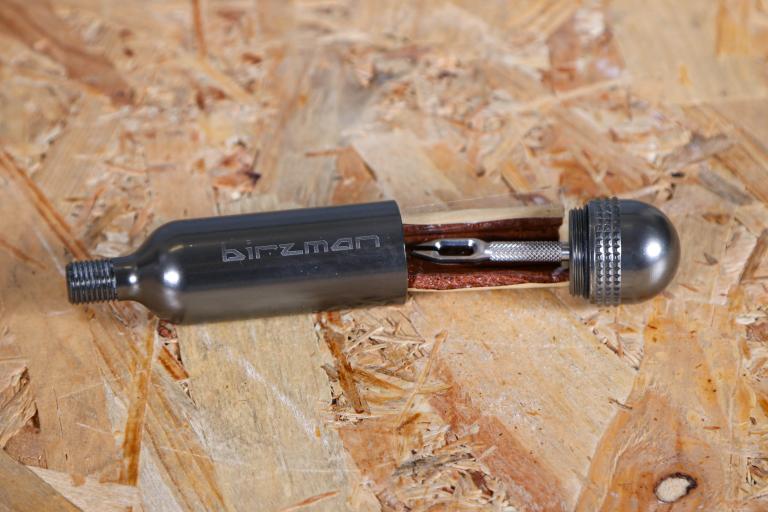
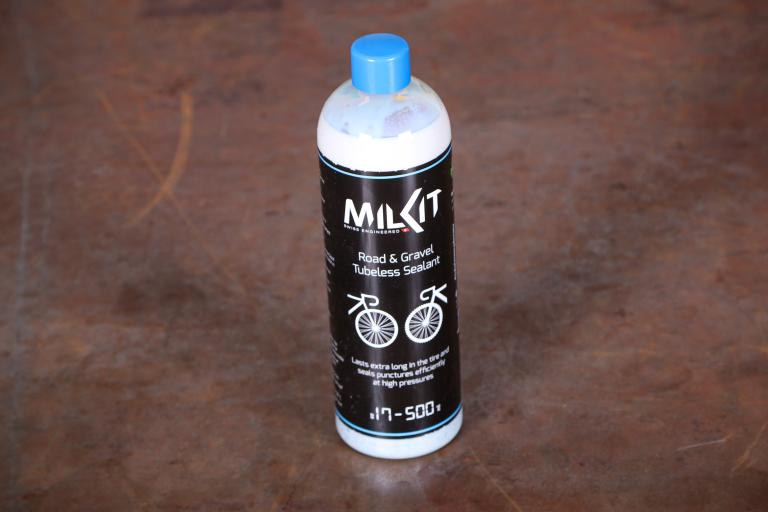
Add new comment
31 comments
Well put. The milKit system certainly removes one barrier I had to road tubeless - it certainly simplifies inspection of the sealant.
Now if only they sold it in my neck of the woods
Granted, where I live, there's still tubeless rim tape and availability of the sealant itself to worry about (stocks can run low). And as good as Continental makes even its cheapest slick tires, none of them "officially" work for tubeless conversion, which is a minor shame.
Pages